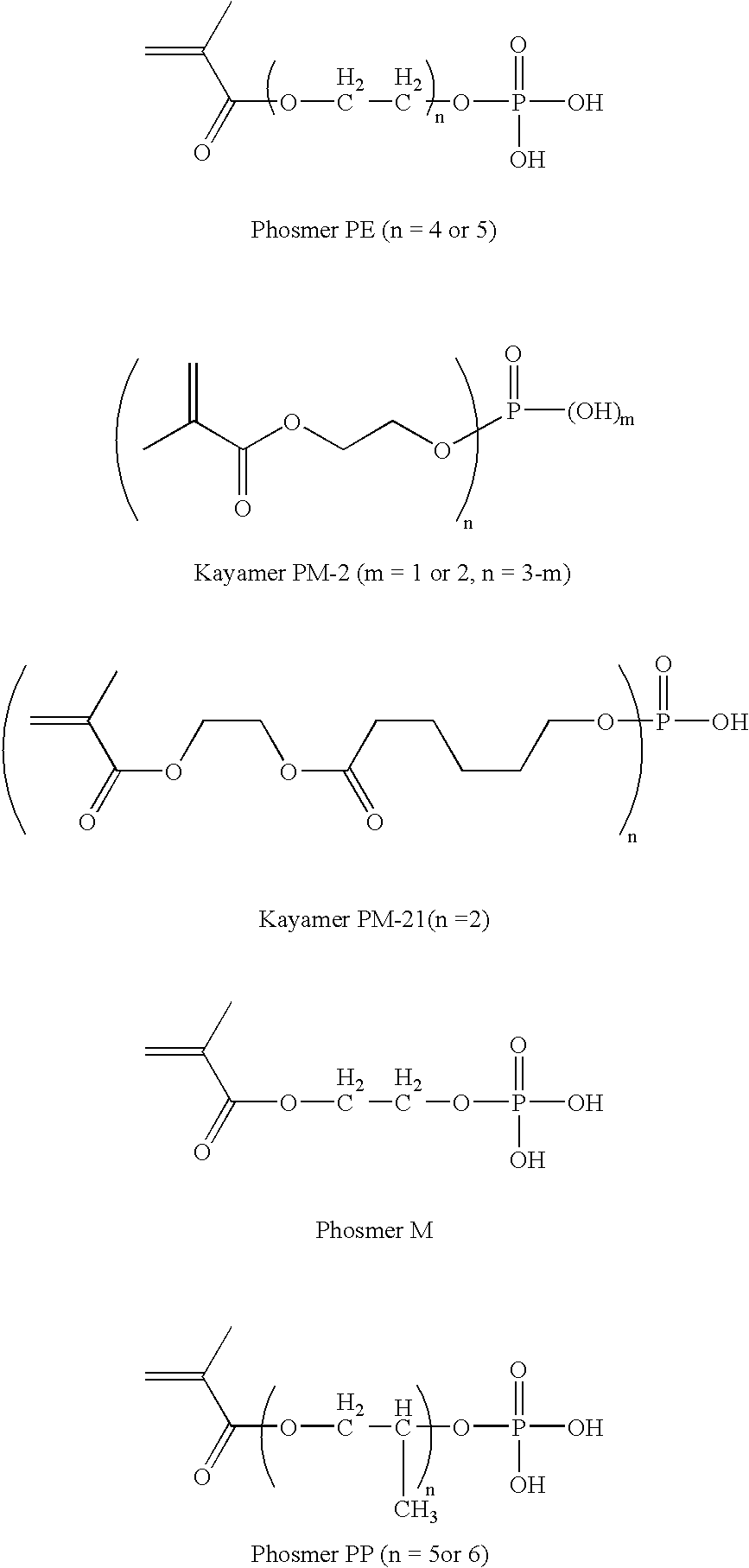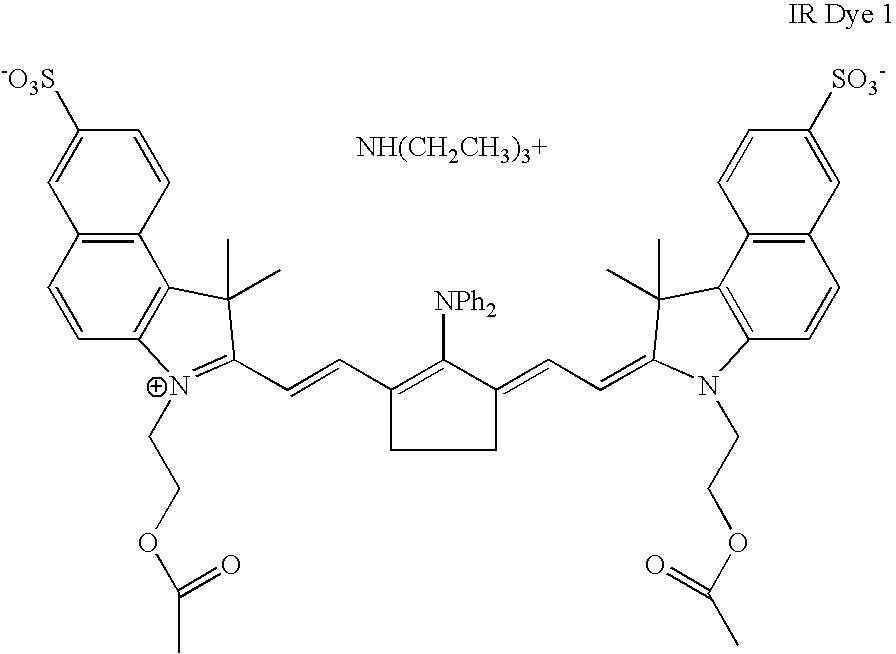Method of preparing negative-working radiation-sensitive elements
- Summary
- Abstract
- Description
- Claims
- Application Information
AI Technical Summary
Benefits of technology
Problems solved by technology
Method used
Image
Examples
examples
[0143]The components and materials used in the examples and analytical methods used in evaluation were as follows. Unless otherwise indicated, the chemical components are available from Aldrich Chemical Company (Milwaukee, Wis.).
[0144]Black wrapping used comprised 2.5–6 mil (0.0063–0.015 cm) low-density polyethylene.
[0145]BLO represents γ-butyrolactone.
[0146]Blue 63 is 3-(4-diethylamino-2-ethoxyphenyl)-3-(1-ethyl-2-methylindol-3-yl)-4-azaphthalide that was obtained from Yamamoto Chemicals, Inc. (Japan).
[0147]Byk® 336 surfactant was obtained from Byk Chemie (Wallingford, Conn.).
[0148]DHBP represents dihydroxybenzophenone.
[0149]Elvacite® 4026 is a 10% (wt.) solution of a highly-branched poly(methyl methacrylate) in methyl ethyl ketone that was obtained from Ineos Acrylica, Inc. (Cordova, Tenn.).
[0150]Graft Copolymer 1 is a 24 weight % dispersion in a 76:24 mixture of n-propanol and water and is a copolymer with the composition of PEGMA / acrylonitrile / styrene with a weight ratio of 10 / 7...
examples 1 and 2
[0170]On an electrochemically-grained and sulfuric acid-anodized aluminum substrates, that had been post-treated with either PVPA, PF #1 or PF #2, each of the imageable layer formulations described in TABLE I below were applied to provide imageable layers having a dry coating weight of 1.5 g / m2. The formulations were applied using a slotted-hopper and then dried for approximately 60 seconds at 180° F. (about 82.2° C.).
[0171]
TABLE IExample 1 (parts byExample 2 (parts byComponentweight)weight)Oligomer 11.242.25SR 3990.830SR 35500.23Graft Copolymer 14.997.08Klucel ® E0.200.23Irganox ® 103500.02Irgacure ® 2500.250.29Mercapto-3-triazole0.110.13IR Dye #10.160IR Dye #200.09Byk ® 3360.360.41Phosmer PE0.2001-Propanol64.0162.38Water8.698.262-Butanone18.9618.65
[0172]Samples of each resulting imageable element were treated under various conditions in order to accelerate the effects of ageing. In one test, the elements were wrapped in interleaving paper and paper-backed aluminum foil and then he...
examples 3 and 4
[0177]On electrochemically-grained and sulfuric acid anodized aluminum substrates that had been post-treated with PVPA, the imaging layer formulations described in TABLE III below were applied to provide imageable layers having a dry coating weight of 1.0 g / m2 by using a wire-wound rod and then dried for approximately 90 seconds residence time in a Ranar conveyor oven set at about 100° C.
[0178]
TABLE IIIExample 3 (parts byExample 4 (parts byComponentweight)weight)Oligomer 11.381.30SR 3990.870.57PEGDA0.350.27Graft Copolymer 15.705.51Klucel ® E0.040Klucel ® M00.04IB-050.310.31Mercapto-3-triazole0.090.09IR Dye #10.180.18Elvacite ® 402600.20Blue 6300.20DHBP00.10Byk ® 3360.400.41Phosmer PE0.070.071-Propanol44.0344.14Water13.8913.922-Butanone27.1024.69
[0179]Samples of each resulting imageable element were treated under various conditions in order to accelerate the effects of ageing. In one test, the elements were wrapped in interleaving and paper-backed aluminum foil and then heat-treated ...
PUM
| Property | Measurement | Unit |
|---|---|---|
| Wavelength | aaaaa | aaaaa |
| Wavelength | aaaaa | aaaaa |
| Solid angle | aaaaa | aaaaa |
Abstract
Description
Claims
Application Information
 Login to View More
Login to View More - R&D
- Intellectual Property
- Life Sciences
- Materials
- Tech Scout
- Unparalleled Data Quality
- Higher Quality Content
- 60% Fewer Hallucinations
Browse by: Latest US Patents, China's latest patents, Technical Efficacy Thesaurus, Application Domain, Technology Topic, Popular Technical Reports.
© 2025 PatSnap. All rights reserved.Legal|Privacy policy|Modern Slavery Act Transparency Statement|Sitemap|About US| Contact US: help@patsnap.com



